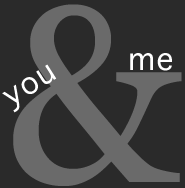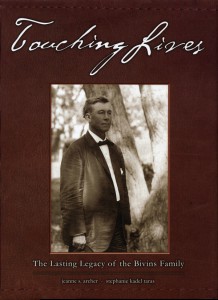With the recent release of the iPad and the latest iPhone, there’s been a lot of buzz lately about e-books. Here I offer up some thoughts on the subject.
You do realize, don’t you, that the “book” part of “e-book” is a metaphor? It’s used to describe a way of presenting text through electronic devices. I don’t have any particular beef with the metaphor, but I do have some concerns about how creators of traditional books are reacting to the idea. Here are some of the questions I’ve come across lately.
Do we need to start offering our clients e-books?
Yeah. probably. Why wouldn’t we? The largest proportion of the cost of a privately published book goes into developing the manuscript. Offering an e-book option expands our product offering for very little additional work or cost while generating increased revenue.
Although the “why wouldn’t we?” in the above paragraph was written in a bit of a snarky tone, there may be good reasons why we don’t include that option in our services. Maybe we want to be known as a traditional book publisher of the finest heirloom quality and leave other media to someone else. There’s no right answer; it’s a question of how this product/service offering fits into your overall business plan. [Uh, you do have a business plan, don’t you?]
If I design a traditional book as a two page spread, do I have to redesign it for the e-book format?
Probably, if you want to take full advantage of the electronic format for presenting material. Or, plan ahead when developing the initial design so it presents well in either format. Also keep in mind that each publishing platform – Kindle, iPad, iPhone, web – has slightly different technical requirements.
Yikes! How can I learn yet another new technical thing? It’s all too much!
Who says you have to? There’s no requirement that you do everything yourself. There are online services as well as individual service providers who will handle the conversion of a .pdf file designed for print into the e-book format for you. And these people are going to stay on top of the ever-changing landscape of e-books so you can move on and engage another client and spend your time doing what you do best, or most enjoy. [Hopefully those two things are closely aligned.]
But if you are a learning junkie, there are plenty of online resources. One of the best, in my opinion, is Adobe tv tutorials.
My clients are all old so they’re not going to be wanting to read the book on an iPad or Kindle.
First, don’t be so sure of that. There are a great many web, iPad and iPhone mavens among our elders. And, while we certainly want to make the end product accessible to a range of ages, to a large extent these personal histories are being created, as Alli Joseph puts it, for the “seventh generation.”
Which format is best for our clients?
This isn’t like buying garden hose at Lowes: with good, better, best marked on the shelf. I personally think the ideal personal history package would combine audio and video, a traditional, beautifully printed and bound book, a slide show of images, and an e-book format. Each of these is an option that the client can select—or not. But if they can only choose one, I vote for the traditional book.
Let’s make this real:
Assume a generation is 25 years – from the birth of the parent to the birth of the first child – so, for someone in their 80s telling their story, they are the 1st generation. Their children are the 2nd, and their grandchildren the 3rd. It’s likely that there are great-grandchildren as well; they comprise the 4th generation. They are probably not going to remember much about great-grandmama. The 5th generation will begin showing up around 2035, the 6th generation in 2060, and the 7th generation around 2085.
It’s probably safe to say that .pdf and the iPad are no longer dominant formats. [It’s also not completely unreasonable to posit that the world has run out of power to run a world wide web and recharge portable devices.] So unless someone takes responsibility for migrating the electronic file created in 2010 to the new formats and media that will arise in the next 75 years, these files on DVDs are likely to end up an inaccessible historic artifact.
A physical book—what I call book-as-object—is a transcendent technology. As long as the paper it’s printed on has not crumbled or the ink/toner run or evaporated, it will still be readable in 2085. It’s easy enough to pass on from one person to another—no optical storage device, or even electricity needed. It can remain dormant for a generation or two and be ready to read when that forgotten trunk in the attic is opened.
Some related posts that might be of interest:
– hum! I don’t actually see any right now.











2 Trackbacks
[…] have no quarrel with e-books; I think they are a fascinating new medium through which to present information via an electronic […]
[…] now, as books take on another incarnation as e-books [something I think of as a simply a metaphor, no more a book than a television show is a stage production], even more issues—design and […]